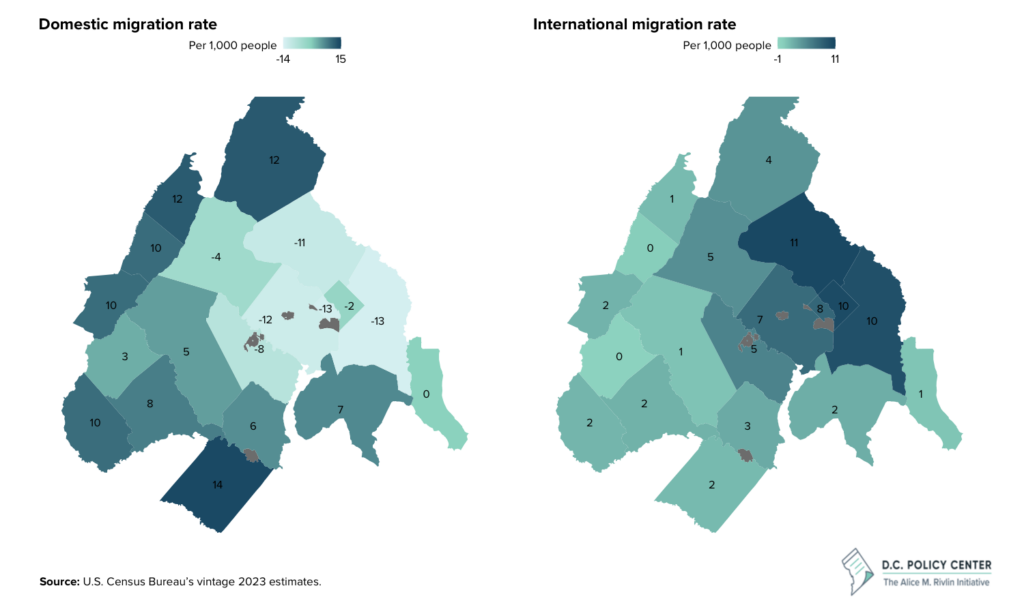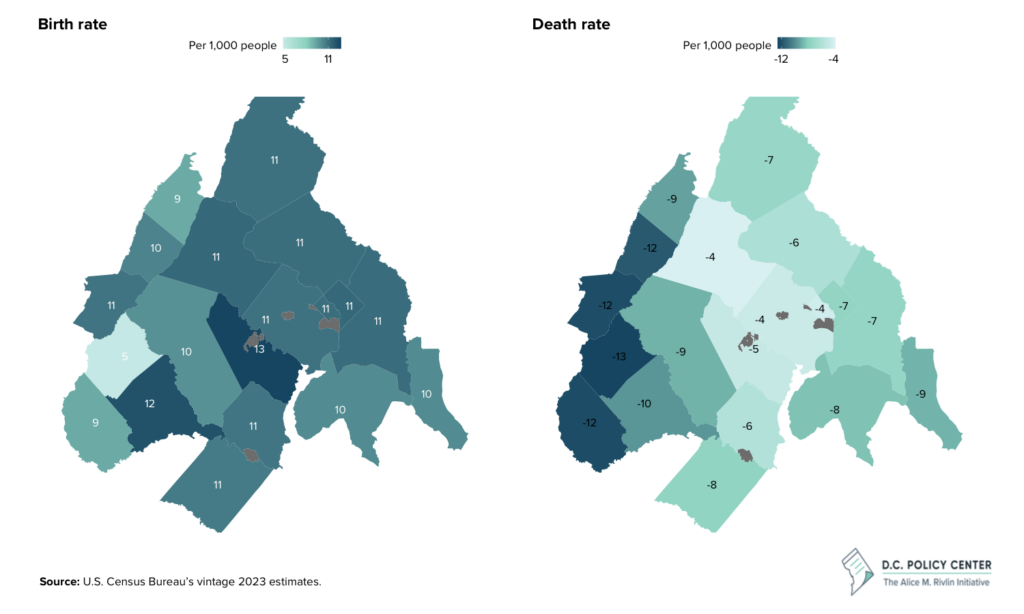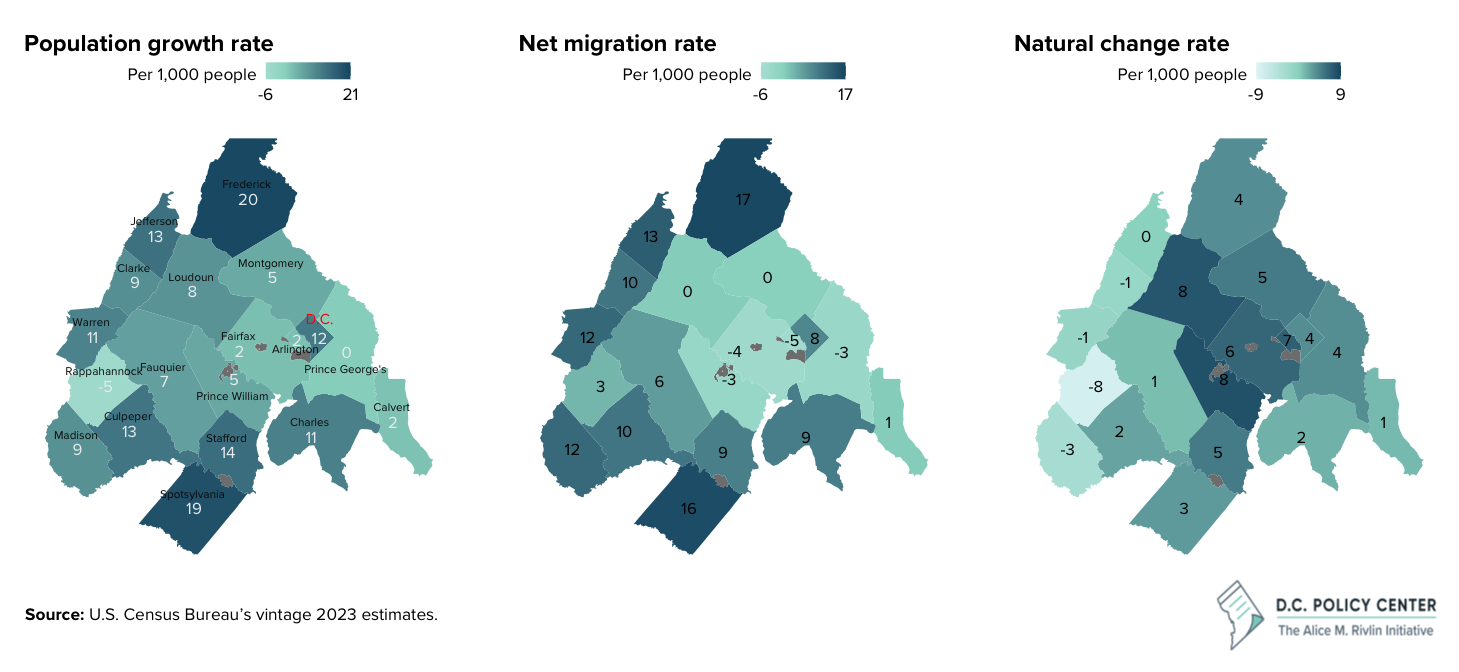On March 14th, 2024, the United States Census Bureau released data on the components of population change for counties across the United States. The data show that, compared to other counties in the Washington metro region, the District of Columbia experienced better than average population growth. Between July 2022 and July 2023, for every 1,000 people living in a county, a county’s population increased on average by approximately 8 people. But D.C.’s population increased at a faster rate of 12 per 1,000 people. This growth was primarily driven by international migration and, to a lesser extent, fewer deaths than in past years.
As in previous years, the District experienced net domestic out-migration—that is, more people moved out of the District than moved in from other U.S. states and territories. But this loss was smaller than in past years. The District’s population gains from international migration overcame its losses from domestic migration.
Counties bordering the District fared less well. For example, Arlington County’s population grew at a rate of 2 per 1,000 people. This growth was driven by natural change. Unlike the District, Arlington’s gains from international migration were not enough to overcome its losses due to domestic migration. During the period, for every 1,000 people living in Arlington, 5 people, on net, ended up moving out.
Several counties in the region’s suburbs and exurbs experienced faster population growth than the District. Spotsylvania County and Frederick County posted the fastest growth rates in the region—at 19 per 1,000 people and 20 per 1,000 people, respectively. For both counties, the growth was primarily driven by migration, and particularly domestic migration.


More generally, as the chart above illustrates, the counties closest to D.C. benefitted most from international migration, while counties further away from D.C.—that is, the region’s suburbs and exurbs—benefitted more from domestic migration. This latter pattern is not new. Since 2020, the region’s suburbs and exurbs have experienced strong domestic in-migration—a development that has likely been driven by the rise and popularity of remote work.


Given the relatively low variation in birth rates, the differences in death rates likely drove the natural change (births minus deaths) across counties in the Washington metro region. D.C. had a death rate of 7 per 1,000 people. Put differently, for every 1,000 people who lived in the District between 2022 and 2023, roughly 7 people passed away. Arlington County—a neighboring county to D.C.—had a slightly lower death rate of 4 per 1,000 people. And Virginia’s county of Rappahannock had the highest death rate in the region of roughly 13 per 1,000 people.
All in all, the recent population trends provide some grounds for optimism that, in the upcoming years, the District can regain its competitive edge in the region. During the pandemic, economists referred to the growth of the outer suburbs and the declining population of city centers as the “donut effect.” But now, for the first time since the pandemic, the donut effect has disappeared. The District along with the region’s suburbs and exurbs are growing together.
